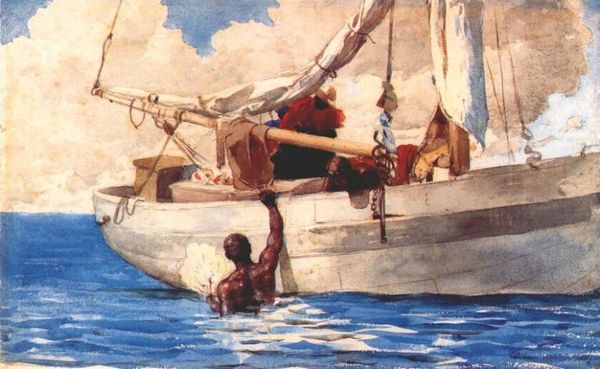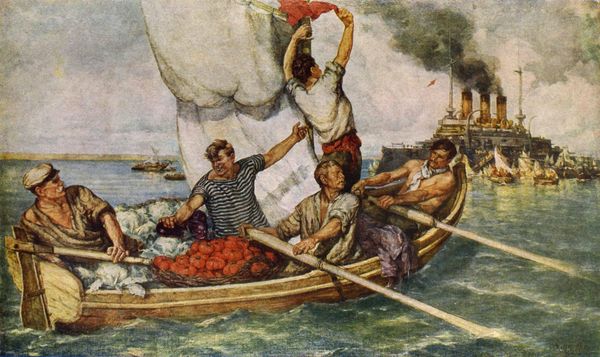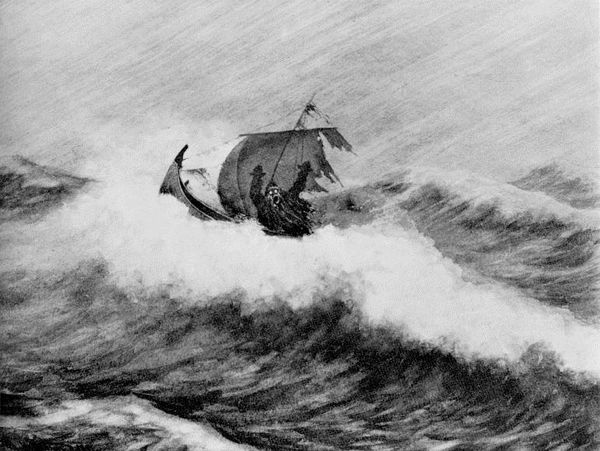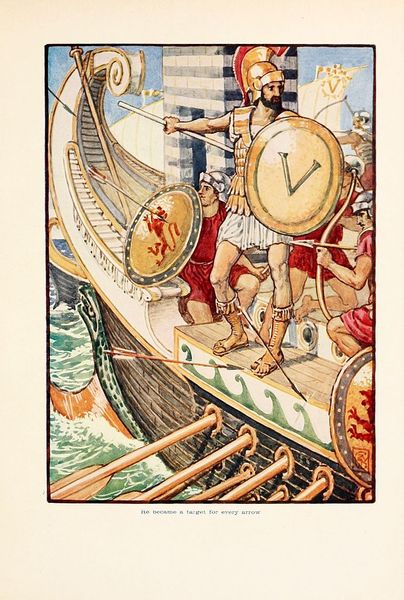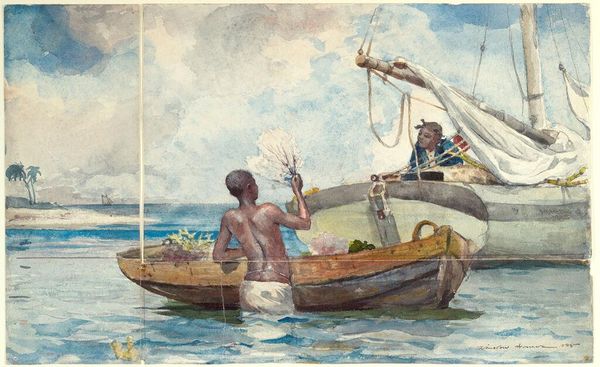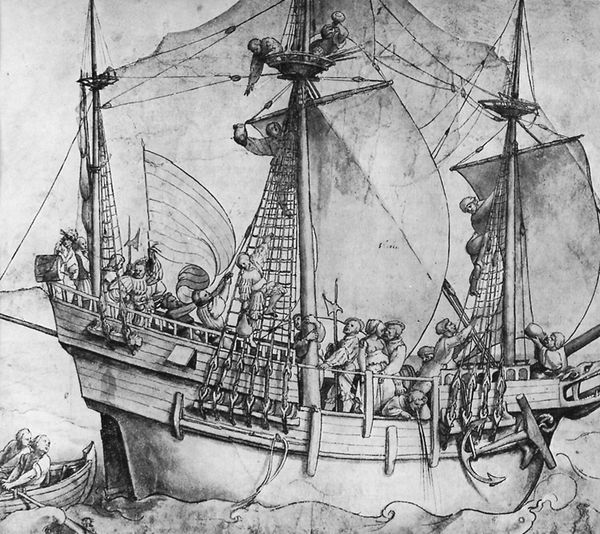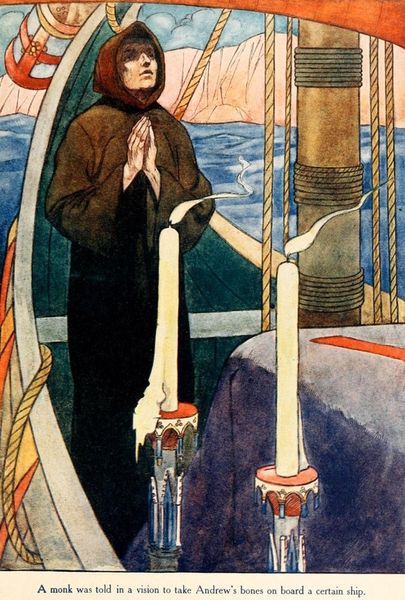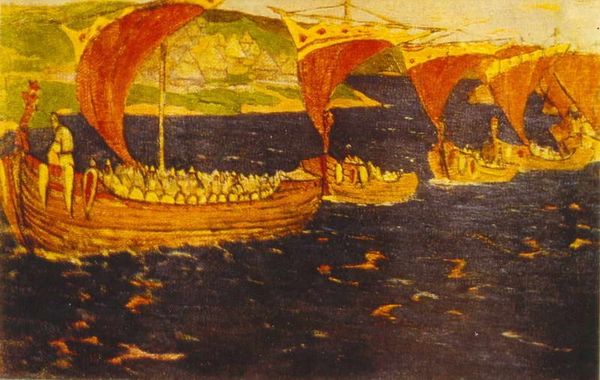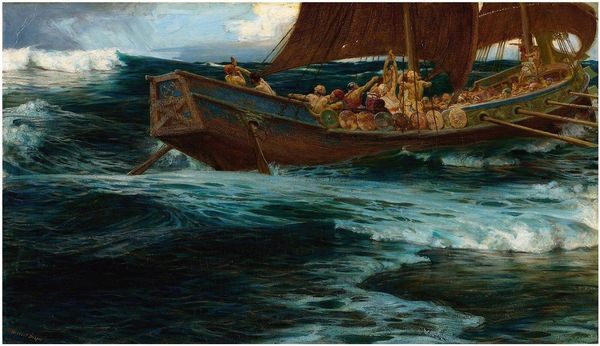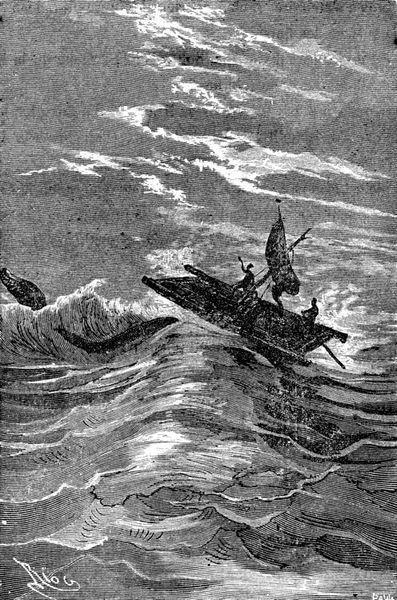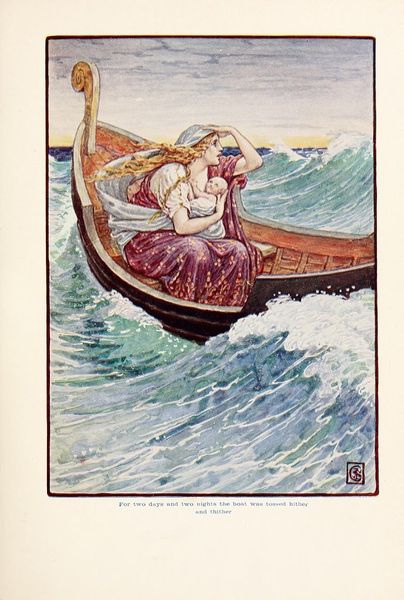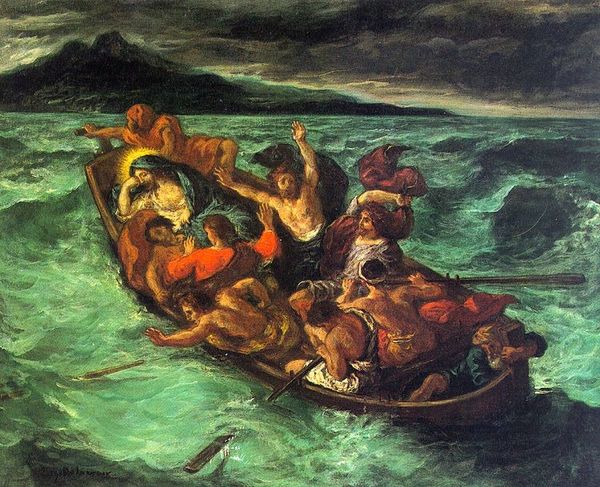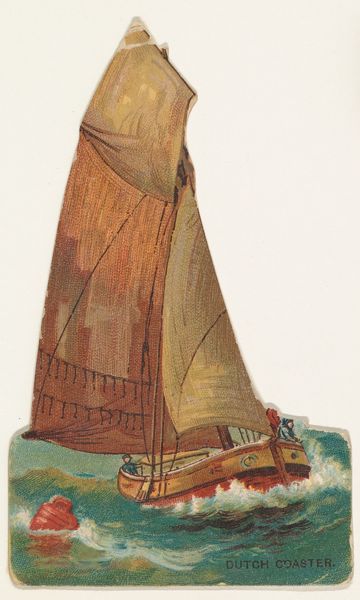
Copyright: Public domain
Curator: Here we have Francis Davis Millet’s "The Norse Discoverers," painted in 1909. Editor: What strikes me first is the vibrant gouache and watercolour. It really brings to life this maritime scene of what appears to be Vikings on the open sea. The scale is hard to get a sense of, but the colors and textures give it an epic, almost cinematic feel. What do you see in this piece? Curator: Well, let's dissect the composition itself. Note how the artist employs a predominantly horizontal format, emphasizing the expansive nature of the sea and, implicitly, the journey. The diagonals of the boat and the figures’ gestures create dynamism, yet the color palette maintains a certain stability. Editor: I hadn’t considered that interplay between dynamism and stability. Curator: Observe how Millet balances warmer hues—the reds in the figures’ clothing and the gold on the ship—against the cool blues of the water and sky. This creates a visual rhythm. What, to your eye, does that juxtaposition communicate about the work? Editor: Possibly the struggle against the elements? The warm colours representing human ambition clashing with the cold, indifferent sea? Curator: An astute reading. Now, regarding materiality, consider how the textures are rendered with such precision in gouache and watercolour. The effect suggests both meticulous planning and spontaneous execution. A curious tension. Editor: It’s fascinating how much can be gleaned just by examining the visual elements. Thank you. Curator: Indeed. By understanding its formal properties, we reveal layers of meaning embedded within the artwork's very structure.
Comments
No comments
Be the first to comment and join the conversation on the ultimate creative platform.
